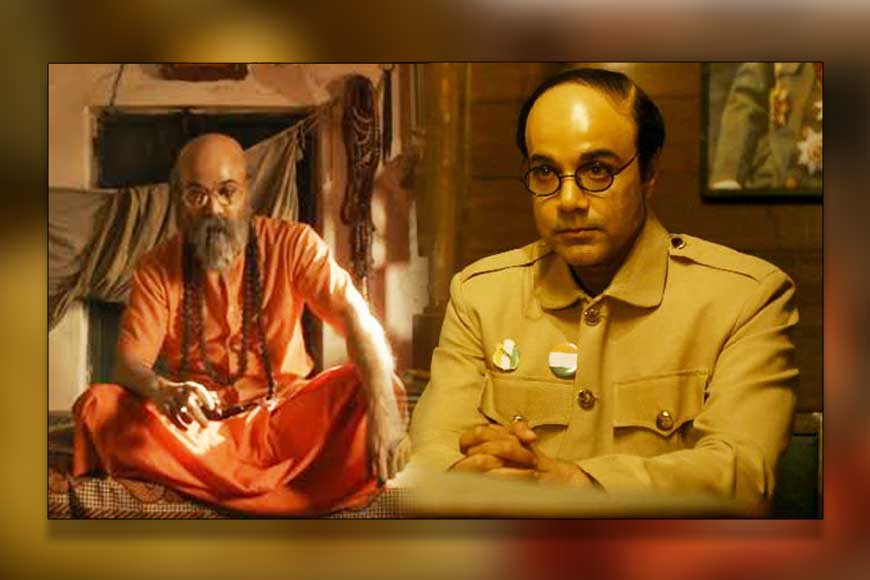Gumnaami – in the eyes of journalist and Probashi Bangali Shubhobroto Ghosh

In Hindu culture, one of the manifestations of Brahman is satya (truth). In Christianity, in the process of crucifixion of Jesus, Pontius Pilate exclaims, “What is truth?” For millennia, human beings of all cultures and faiths, have pondered on the nature of what constitutes the truth. In Indian history, one subject on which we do not know the truth or the truth is most contentious is that of the death of Netaji Subhas Chandra Bose. As former president of the Congress who revolted against the principle of ahimsa (non-violence) of Mahatma Gandhi and founder of the Indian National Army that fought alongside the Axis powers in World War II, Netaji is of abiding interest to all, admirers and detractors alike. Just as his life is subject to scrutiny in terms of merits and demerits of his political ideologies, his death is the center point of a raging debate that is still not resolved. The official version of the Indian government (at least the Congress government) has remained that Netaji Subhas Chandra Bose died in an air crash in Taihoku in Taiwan on the 18th of August, 1945. However, this version has been contested by many and it is in the wake of this debate that filmmaker Srijit Mukherji has made his latest film, ‘Gumnaami’ as a contribution to the substantive body of research that challenges the official perspective on Netaji’s death.
The film impresses with its meticulous research and despite questioning the plane crash theory, portrays the Taihoku plane crash in very moving light. The sheer determination of a freedom fighter to continue his struggle for independence of his motherland is shown in ebullience. Amidst the devastation of Japan with nuclear bombs and the brutal losses to the Indian National Army that forced them to retreat from North East India, abandoning the onward march to Delhi, Netaji is shown as a steadfast soul who is unwavering in his single minded objective to witness a free India. Prior to Netaji’s departure from India, his meeting with Mahatma Gandhi and Jawaharlal Nehru on the nature of India’s position during World War II is also depicted skilfully. ‘Gumnaami’ makes us marvel at the endeavours of the actors to fit into the shoes of the characters they portray. Prosenjit Chatterjee, already well known for numerous roles in a variety of circumstances, is brilliant in his portrayal of Netaji and so are Surendra Rajan as Mahatma Gandhi and Sanjay Gurbaxani as Jawaharlal Nehru. One unique aspect of Gumnaami as a film is that the director himself, Srijit Mukherji, plays the role of a newspaper editor who is trying to make a special story on the Mukherjee Commission that was set up in 1999 by the government of India to look into the circumstances of Netaji’s disappearance from public view. The editor convinces a journalist named Chandrachur Dhar, initially a sceptic on Subhas Chandra Bose, portrayed mesmerisingly by Anirban Bhattacharya, to undertake a comprehensive investigation on the information surrounding Netaji’s death. Although the first half of the film seems somewhat slow, the director captures the attention of the educated layman at every point of the narration with exact locations and characters provided as subtitles, all based on reality. The character of Chandrachur Dhar is fictional though, and the name is an amalgamation of two ardent Netaji researchers of ‘Mission Netaji’, Anuj Dhar and Chandrachur Ghose, authors of the book, ‘Conundrum’ that deals with Netaji’s death mystery.
Gumnaami adroitly shows the dissenting voice of Chandrachur Dhar during the course of the hearing of the Mukherjee Commission. In the face of stringent opposition, criticism and mockery by Mr Pal, a lawyer who is in favour of the plane crash theory of Netaji’s death, Chandrachur Dhar peels the onion, bit by bit and as he says in the film by “breaking political palaces” surrounding Netaji’s death and the official version of the Taihoku plane crash. His testimony reveals an astonishing nineteen (19) inconsistencies in the Taihoku plane crash theory, inconsistencies that appear to have been overlooked by the two commissions appointed by the government of India before the Mukherjee Commission, the Shahnawaz Commission constituted in 1956 and the Khosla Commission made in 1970.
The movie touches upon the line of research made most notably by Dr Purabi Roy that Netaji made it to Russia after 1945 and was held as a prisoner of war by Stalin. Indeed, a sequence shows an Indian mechanical engineer named Ardhendu Sarkar informing the Indian ambassador in Moscow about Netaji meeting one of his German colleagues in a Siberian gulag in 1948, who meets with chilling indifference from the Indian embassy. The film briefly hints that Netaji could have been tortured in Russia.
‘Gumnaami’ for many represents and is synonymous with Gumnaami Baba, an ascetic who is said to have lived in various locations, mainly in Uttar Pradesh from 1955 to 1985. The director, Srijit Mukherji, has rightly stated that the name ‘Gumnaami’ means unknown and his film explores the unknown fate of Netaji Subhas Chandra Bose after 18 August, 1945, and is not solely based on the theory of him living in India as Gumnaami Baba. Nonetheless, the transformation of a robust army general who shook hands with Adolf Hitler and Benito Mussolini to an anonymous monk living behind a curtain can most certainly be said to be the pinnacle of the film.
Adding to the mysterious aura of Netaji living as a monk is the fact that Gumnaami Baba apparently had ten names and almost never met people face to face. For the uninitiated, Gumnaami Baba is a silent thunderstorm, ranging from his meetings with selective politicians to his conversations with former Indian National Army personnel and his correspondence with some family members. Among these individuals were Pabitra Mohan Roy, former intelligence officer of the Indian National Army, Leela Roy of Forward Bloc party and Suresh Bose, brother of Subhas Chandra Bose. The viewer also cannot miss the trenchant revelation that Gumnaami Baba, also known as Bhagwanji, was a man who read Bengali books and listened to Bengali music, thus indicating that the mysterious man could indeed have been Netaji Subhas Chandra Bose.
Gumnaami Baba shows his frustration with the way India won her independence and the terrible cost borne by Partition. The film conveys the family tragedy of the researcher Chandrachur Dhar, whose wife, Roni, depicted by Tansuree Chakraborty, leaves him, because of his obsession with Netaji. The film ends with the conclusions of the Mukherjee Commission that stated that Netaji Subhas Chandra Bose did not die in the purported air crash in Taihoku on 18 August, 1945. The commission was however indecisive about whether Subhas Chandra Bose died in Russia or whether the identity of Gumnaami Baba was the same as Netaji Subhas Chandra Bose. The role of Justice Manoj Mukherjee, played by Shyamal Chakraborty, has been extraordinarily reminiscent of the real man who has privately confessed that he is “100% sure that Gumnaami Baba and Netaji Subhas Chandra Bose” are one and the same individual.
Gumnaami also enchants us throughout with beautiful and melodious songs, including ‘Kadam Kadam Baraye Ja’ and the Indian National Army anthem ‘Sab Sukh Chain Hain’ that later became the Indian national anthem, ‘Jana Gana Mana’. There is one jarring aspect of ‘Gumnaami’ that has to be mentioned here and that is the sequence of book burning by Chandrachur Dhar toward the end of the film due to his frustration at the Mukherjee Commission findings. The viewer would be pardoned for being somewhat at a loss to understand how a person who could have diligently devoted three years of his life to researching Netaji Subhas Chandra Bose could have set alight his own work, thereby precluding any further research on solving the jigsaw puzzle of the death of Netaji Subhas Chandra Bose. This portion of the film seemed unnecessary in an otherwise captivating script.
‘Gumnaami’ as a film has weathered many storms, from opposition coming at the behest of some members of the Bose family to political threats and lawsuits and even physical threats. It is entirely to the credit of the crew of ‘Gumnaami’ led by Srijit Mukherji that the film has been released and is running successfully all over India in both Bengali and Hindi. ‘Gumnaami’ does not give us a conclusive answer to what happened eventually to India’s most controversial national leader. ‘Gumnaami’ raises many questions that still seek answers from the government. Gumnaami is, and will remain, an important contribution on the life and death of one of India’s most iconic figures, Netaji Subhas Chandra Bose.
(Shubhobroto Ghosh is an ex journalist with the Telegraph newspaper whose works have also been published in the Hindu, Statesman, BBC, New York Times and Times of India. He now works in an international NGO and does freelance journalism)









